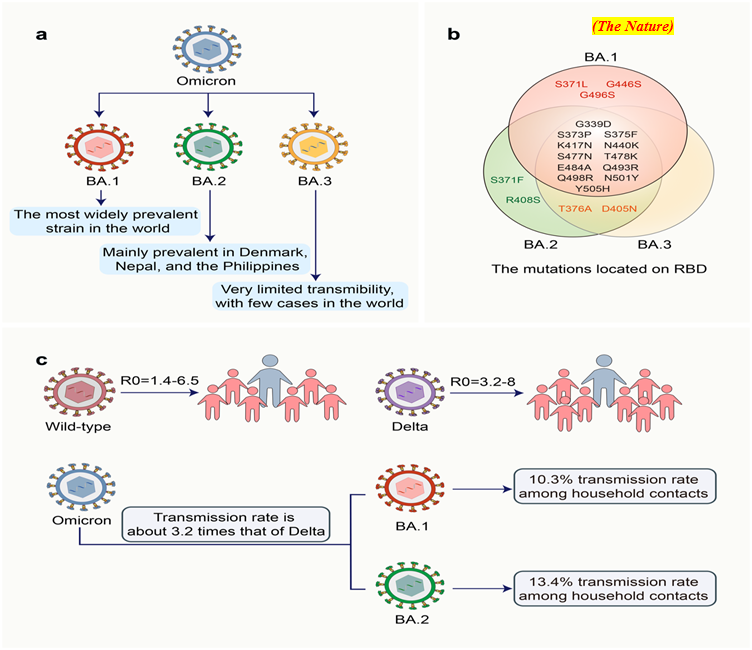Indias NE strategic rail link to LAC with China gathers pace plans to connect 8 capitals too (GS Paper 3, Defence)

Why in news?
- India has completed the final location survey of three strategic railway lines in the Northeast that aims to help the military push its men and equipment faster into the border areas, especially in Arunachal Pradesh, along China.
- These strategic railway lines, which will be completed over the next one decade, will add to the extensive network of highways that are already being built.
Strategic railway lines:
- The plan, first mooted by the Army in 2010-11 also aims to put many key border areas including that in Arunachal Pradesh, Manipur and Sikkim on the broad gauge rail map.
- However, the key lines for which work was sped up are a 200 km broad gauge line between Bhalukpong to Tawang (Arunachal Pradesh), 87 km line between Silapathar (Assam) to Along via Bame (Arunachal Pradesh) and 217 km line between Rupai (Assam) to Pasighat (Arunachal Pradesh) which also has an advanced landing ground of the Indian Air Force.
- All the three proposed railway lines are categorised as “strategic”, which means that the cost will be borne by both the railways and defence ministries.
How it is important for the Army?
- The projects got a push because of the ongoing stand-off with China along the Line of Actual Control (LAC). The Army was pushing for the strategic lines because it would help in the movement of soldiers and equipment.
- The Bhalukpong-Tawang line is one of the most important projects which will cater to the military’s wide needs in an area which has seen tensions rise with China.
- The proposed line will see multiple tunnels and will be built at locations over 10,000 ft.
- Both the highways projects and the strategic railway lines were mooted by the Army as part of its internal study on defence preparedness.
More railways lines being planned:
- While the three strategic rail link projects where the final location survey is completed are all in Arunachal Pradesh, the NFR will also start work on another strategic rail line – 26 km long broad gauge track connecting Murkongselek, a village in Dhemaji, north Assam to Pasighat in Arunachal Pradesh.
- Though Assam and Arunachal Pradesh are presently connected by rail line, the Murkongselek-Pasighat line is strategic as it will facilitate movement of defence forces further inside Arunachal Pradesh.
- Besides, the NFR is also undertaking a feasibility study to see if a broad gauge line to connect Kokrajhar in Assam to Gelephu in Bhutan.
- Gelephu is on the Assam-Bhutan border and the proposal to provide rail connectivity between Assam and Bhutan has been on the pipeline for a while now.
- The Indian Railways is also moving ahead with its plan to bring Sikkim on the rail map.
Connecting all 8 Northeast capitals with rail line:
- It’s not just the strategic rail links, as the railway ministry is also working to ensure that the capitals of all the 8 Northeast states are connected with a broad gauge line.
- While Guwahati (Assam), Itanagar (Arunachal Pradesh) and Agartala (Tripura) already are on the rail map, Kohima (Nagaland) will have a broad gauge line by 2026. Work is already at an advanced stage to connect Imphal (Manipur) and Aizawl (Mizoram) rail line. Both the lines will be ready by 2023.
- Though Meghalaya is connected to the rail network, the NFR has not been able to make progress to connect its capital Shillong with a rail line because of protests by Khasi groups demanding Inner Line Permit in the state.
The emerging Omicron sublineages across the world
(GS Paper 3, Science and Tech)
Context:
- Since the initial outbreak in 2019 in Wuhan, China, the world has seen multiple repeated waves of COVID-19 infections over the past few years, largely driven by the emerging variants of concern (VOCs) of the causative virus, SARS-CoV-2.
- However, until recently, China remained successful in containing the spread of the disease owing to its zealous “zero-COVID” policy, which included mass quarantines, lockdowns, and early vaccination programmes.
- As a result of the abrupt lifting of the policy, the country is now facing a surge of COVID-19 cases.

What are the SARS-CoV-2 lineages circulating in China?
- Over the course of the pandemic, genome sequencing of the virus and rapid sharing of data has been key to tracking the evolution of SARS-CoV-2 and early identification of emerging variants.
- SARS-CoV-2 sequencing data previously submitted from China to GISAID, a globally accessible repository of SARS-CoV-2 genome sequences, shows that over the months, the country has seen isolated cases linked to multiple variants of the virus seen previously.
- These include Delta and its sublineages in 2021, and Omicron and its sublineages in 2022. Only 30 sequences of SARS-CoV-2 collected between October-December 2022 are available on GISAID from China.
- These belong to 14 different lineages of SARS-CoV-2, all of which are Omicron sublineages, including BA.5.2, BQ.1.1, BF.7, BF.5, BA.2.75 and the recombinant lineage XBB.
- Of the 14 genomes from China available on GISAID for the month of December, two genomes each belong to the Omicron sublineages BF.7, BF.5 and BA.2.75, while one genome belongs to the recombinant lineage XBB.
- Lineages BF5 and BF.7 of SARS-CoV-2, while first detected in January 2022 in France, have also been previously detected in India in May and July 2022, respectively, while lineage BA.2.75 was first detected in India as early as December 2021.
- The recombinant lineage XBB has also been previously detected in early 2021 in multiple countries in Asia, including India and Singapore. With the limited number of genomes available corresponding to the ongoing outbreak, we are still in the dark about the variants driving the wave in China.
Which Omicron sublineages are under monitoring?
- Owing to the large-scale spread of Omicron and its sublineages across the world, the World Health Organisation (WHO) has added another category of variants referred to as ‘Omicron subvariants under monitoring’.
- Currently, the Omicron subvariants being monitored under this category include BA.2.75, BA.4.6, XBB, BA.2.3.20 and sublineages of BA.5 including BF.7 and BQ.1.
- While the first sample belonging to lineage BA.4.6 dates back to December 2021, lineage BA.2.3.20 was detected in multiple countries recently in August 2022.
What is the XBB lineage?
- The SARS-CoV-2 virus has the potential to evolve by exchanging large fragments of the genome, called recombination. First detected in January 2022, the XBB lineage of SARS-CoV-2 resulted from recombinant between Omicron sublineages BA.2.10.1 and BA.2.75.
- The lineage was largely detected in genomes from Singapore and India, with the largest number of genomes on GISAID belonging to the U.S. and India.
- Although detected in over 30 countries, there has been no observed association of the lineage with a sustained increase in new cases in India but has become now the dominant variant in many countries seeing an uptick in infections. Monitoring the prevalence of XBB and its sublineages will therefore be essential in the days to come.
- Although BA.5 was first detected in November 2021, certain BA.5 sublineages having mutations at key antigenic sites in the virus have emerged over the months, including BF.7, BF.14 and BQ.1. Lineage BQ.1 is a BA.5 sublineage having the mutations K444T and N460K in the spike protein of the virus.
- Accounting for over 5% of global cases, the variant has been seen to have a growth advantage over other lineages in highly vaccinated regions including Europe and the U.S., thus making it important to monitor the spread and evolution of this sublineage.
Way Forward:
- Being immune-naive to Omicron, an overwhelming surge of cases in a populous country such as China will not only cause massive loss to life but will also allow the virus to mutate with the potential to create new variants.
- Wide-ranging efforts are thus urgently required to monitor the COVID-19 situation in China and other countries, including genomic surveillance and the use of time-tested methods with significant scientific evidence.
Antarcticas emperor penguins could be extinct by 2100
(GS Paper 3, Environment)
Why in news?
- Greater conservation efforts are needed to protect Antarctic ecosystems, and the populations of up to 97 per cent of land-based Antarctic species could decline by 2100 if we don’t change tack, a new research has found.
- They identified climate change as the biggest threat to Antarctica’s unique plant and animal species. Limiting global warming is the most effective way to secure their future.

Threats to Antarctic biodiversity:
- The continent’s plants and animals face numerous threats, chief among them is climate change.
- As global warming worsens, Antarctica’s ice-free areas are predicted to expand, rapidly changing the habitat available for wildlife. And as extreme weather events such as heatwaves become more frequent, Antarctica’s plants and animals are expected to suffer.
- The scientists and tourists visiting the continent each year can harm the environment through, for example, pollution and disturbing the ground or plants.
- And the combination of more human visitors and milder temperatures in Antarctica also creates the conditions for invasive species to thrive.
Observations made:
- Under a worst-case scenario, the populations of 97% of Antarctic terrestrial species and breeding seabirds could decline between now and 2100, if current conservation efforts stay on the same trajectory.
- At best, the populations of 37% of species would decline. The most likely scenario is a decline in 65% of the continent’s plants and wildlife by the year 2100.
- The emperor penguin relies on ice for breeding, and is the most vulnerable of Antarctica’s species. In the worst-case scenario, the emperor penguin is at risk of extinction by 2100.
- Climate change will also likely wreak havoc on other Antarctic specialists, such as the nematode worm Scottnema lindsayae. The species lives in extremely dry soils, and is at risk as warming and ice-melt increases soil moisture.
- Climate change won’t lead to a decline in all Antarctic species – in fact, some may benefit initially. These include the two Antarctic plants, some mosses and the gentoo penguin.
- These species may increase their populations and become more widely distributed in the event of more liquid water (as opposed to ice), more ice-free land and warmer temperatures.
Recommendations:
- Clearly, current conservation efforts are insufficient to conserve Antarctic species in a changing world.
- Reducing climate change to no more than 2 degrees Celsius of warming would benefit up to 68% of terrestrial species and breeding seabirds.
- The next two most beneficial strategies were “managing non-native species and disease” and “managing and protecting species”.
- These strategies include measures such as granting special protections to species, and increasing biosecurity to prevent introductions of non-native species.
Funding:
- The study also found just USD 23 million per year would be enough to implement ten key strategies to reduce threats to Antarctica’s biodiversity.
- This relatively small sum would benefit up to 84% of terrestrial bird, mammal, and plant groups.
Way Forward:
- As Antarctica faces increasing pressure from climate change and human activities, a combination of regional and global conservation efforts is needed. Spending just USD 23 million a year to preserve Antarctica’s biodiversity and ecosystems is an absolute bargain.




